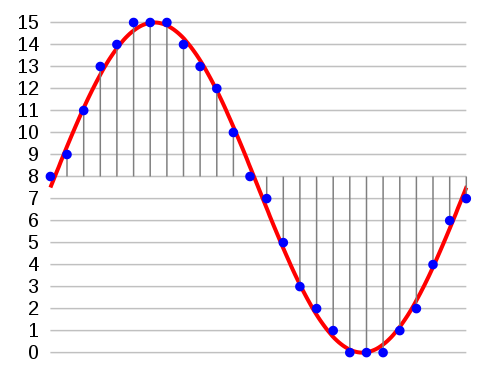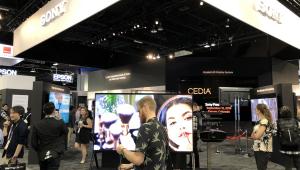Digital Follies

When the CD (now a 40-year old format!) was first introduced it arrived to a mixed reception. I was an early adopter and stationed in Germany at the time. CDs arrived in Europe shorty before they hit the USA side of the pond, so they were readily available to me on my occasional Saturday forays into Frankfurt. (I also once attended a relatively modest Hi-Fi show in that city, which much later morphed into the current and huge annual Munich event).
My first CD player was also Sony's first CD spinner, and when I first fired it up with my first CD I was...confused. The late J. Gordon Holt, then the editor of the then-intermittent Stereophile, had already gushed over the new format as he heard it on that same Sony player. I suspected that Gordon's then-current music system must have been better suited to the format than mine.
Vinyl recordings were king at the time (we called them LPs back then, or simply just records). But CDs caught on like wildfire, threatening and then exceeding LPs dominance. Who knew then that vinyl would, one day, actually turn the tables and outsell CDs. (That statistic, however, is skewed since it refers to total sales revenue for new vinyl, not simply the numbers of discs sold. New vinyl today costs double, or more, than the corresponding CD release. But current vinyl sales are nevertheless impressive. It also helps that used vinyl itself is a significant market.)
That first CD of mine sounded merely okay, though rather cold and icy. But the format gradually improved as early mastering errors were ironed out. Nevertheless, among its early and later naysayers (a small but vocal minority) digital audio has never managed to completely shake its original reputation. Many audiophiles (unlike the general public) have never entirely warmed to the digital music revolution.
Digital audio (we'll stick to PCM here, the most common form) can only exist by slicing up the source into pieces that can be manipulated as needed and either used immediately or stored for later reassembly into analog. Audio playback, or at least the loudspeakers, remains primarily analog. But isn't our hearing, at least in one respect, akin to digital? It may be analog up to the cochlea (the inner ear), which consists of thousands of tiny hairs, each responding to a specific frequency or frequency range that the brain reassembles into what we perceive as sound. I've always wondered (on the video front, though the analogy is also valid for audio) exactly what E.T. (in the movie) actually saw when he experienced a human television for the first time! It was likely very different from what we experience from the identical stimulus.
A Quick Tutorial
Some of the following will be very familiar to long-time audio fans, but a summary here might be useful for newbies. As noted above, digital audio carves analog sound into tiny slices, but how this is accomplished can vary. On a conventional CD the audio is split into 44,100 slices, or samples, every second. Each sample is then represented by string of 16 "bits," each of them either a zero or a one.
Why 44,100?
According to a fundamental tenet of digital audio, the Nyquist-Shannon theorem, for the maximum desired frequency to be digitally stored and then reassembled later without perceptible losses you need at least twice as many samples as the maximum frequency you plan to store. Since our hearing (for a 2-year old at least!) has a useful extension up to 20kHz, sampling at 44,100 samples per second (44.1kHz) should be sufficient to cover the range of human hearing. Why the extra 4.1kHz? I dunno; perhaps it offers a bit of extra headroom. The digital sampling is done by an analog to digital converter (ADC) and the reconstruction by a digital to analog converter (DAC).
While 44.1kHz and 16 bits are used for a large percentage of consumer digital audio, there are audio discs (and on-line, downloadable music streams) that up the ante to higher bit rates, "deeper" bit depths, or both. I'm sure this isn't news to most readers, but for those new to the party these "high-rez" releases are said to offer quality superior to plain vanilla CDs. I'll leave that to the individual to determine, but it's always been my position that the most important factor in any recording once you reach a minimum, at least, of CD quality, is the original source recording itself — the venue, the musicians, how the recording engineer handles the microphone setup, the mix, EQ, and dozens of other factors. A bad recording can't be improved much, even with a 96kHz, 24-bit release.
When DVD and, later, Blu-ray came along, the bit-storage capacity of digital discs increased dramatically. This extra space was needed for video, but the multichannel soundtracks on audio-video Blu-rays also profited and can be as high as 196 kHz at 24 bits (source, Quora discussions). Does that include every channel on the most multichannel-laden discs. I suspect so (particularly since surround and Atmos channels aren't always fully engaged), but this information isn't typically available (or trustworthy if it is), for multichannel recordings.
How Digital Compression Works
That leads us to the important subject of digital compression (to fit the sampled files into the available storage or transmission space, such as the capacity of an audio disc, audio-video disc, or a streamed music or movie file). This is an entirely different subject than dynamic compression (Google "Loudness Wars if you have all afternoon!). With digital compression it's possible to discard data in a music file prior to releasing it to the public, with the resulting degradation said to be either inaudible or unimportant to the listener. That's because some detail is always masked by other aspects of the sound and, in theory, these masked details are wasting storage space and can therefore be deleted.
Compression codecs exist to take advantage of this, deleting "inaudible" detail as it occurs, microsecond by microsecond. Bluetooth, for example, reduces the raw recorded data rate dramatically. This cut and slash technique is less likely to be used on packaged media, where the available storage space is usually more than adequate. But for streaming an uncompressed file can be unwieldy. Digital storage or transmission space, like time, is money.
Such compression, particularly if done without the listener's knowledge, can be a serious concern for audiophiles who want the best possible sound and is an important subject for home theater fans as well. And as streaming continues (unfortunately) to threaten the future of physical music and movie discs, compression could seriously impact home theater enthusiasts as well. What we hear can be no better than the source material provides.
























































